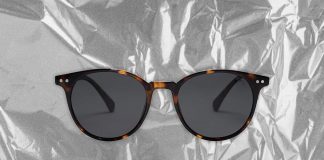Whether you want to share photos, links, files, and more with others nearby or even across your devices, there is a way to do it. Apple has AirDrop, so folks can seamlessly send almost anything to other nearby Apple devices with just a few taps. Google’s Android equivalent is a feature called Quick Share, and it works across Android phones and tablets, Chromebooks, and even Windows computers.
Quick Share searches for devices in close proximity, then chooses a protocol to use depending on what you’re sending and what your connectivity is like. For example, it will use peer-to-peer Wi-Fi if you’re completely offline, but other sharing protocols include Bluetooth, hot spot, WebRTC, and more. Here’s how to make use of it.
Updated February 2024: We refreshed this article after Google rebranded Nearby Share to Quick Share to align with Samsung.
Does Your Phone Support Quick Share?
Android used to have a sharing feature called Android Beam, which let you bump the back of two phones together (if both devices had a near-field communication sensor) to send photos, files, and more. It never became as well known as AirDrop (which launched the same year). Google killed it in 2019 with the intention to replace it with Nearby Share. In January 2024, Nearby Share became Quick Share, to match the name of the same feature on Samsung smartphones. Some devices may still show Nearby Share, but it should work with Quick Share using the same steps.
Quick Share only works with phones that support Android 6.0 or higher, which is a version of the operating system released in 2015. If you have a phone from 2015 or newer, there’s a very good chance your phone will be able to use it. Some of the features of Quick Share require Android 13 or later (Android 10 or later on Samsung Galaxy phones). To check, head to your phone’s Settings menu, scroll down to About Phone, and you should be able to see the Android version. If the number is 6 or higher, you’re good to go.
Note: Some of our instructions might not be exactly the same on your Android phone, as manufacturers tend to tweak the Settings menu to look a little different.
How to Turn On Quick Share
Android via Simon Hill
The easiest and universal way to find Quick Share is to head to your phone’s Settings menu, scroll down to Google, and tap on Devices and sharing. You should see Quick Share. The other way to find it is through Settings > Connected devices > Connection preferences > Quick Share, but this is where the menus might look different based on your phone. You should also see a Quick Share icon in your Quick Settings menu if you swipe down on the notifications shade (if you don’t, tap the pen or edit to add it). You can always search the settings menu for Quick Share.
Sticking with the first approach of finding it in the Google section of your Settings menu, tap on Quick Share. You can change your Device Name and choose Who can share with you. If you don’t want to share your name when sending files or photos with other nearby devices, then it’s a good idea to change your device name to something more nondescript.
In terms of sharing, you have three options:
- Everyone: Choosing the first option means your phone will be visible to anyone nearby with Quick Share turned on, and you’ll see devices near you with Quick Share open. By default, this visibility is limited to 10 minutes after you activate Quick Share.
- Contacts: You can share with everyone in your contacts list who is nearby.
- Your devices: Only other devices that are also signed in to the same Google account as you will appear as sharing options.
There is a big caveat with Quick Share. To use it, you’ll need to have the email addresses for all your contacts (the one they use for their Google Account) stored in their contact information. Alternatively, if your contact has verified their Google Account with a phone number, you’ll be able to use Quick Share with them. To connect your phone number to your Google Account, head here on your phone and toggle on your device. It might take some time to authenticate.
How to Use Quick Share With Phones
Android via Simon Hill
Whenever you want to share something with a friend or family member nearby, whether it’s an address in Google Maps, a photo, a file, or a web link, simply tap the share button, and from the Share menu, find and tap on Quick Share. Your phone will start searching for devices nearby that you can share with.
The person you’re sharing with will need to be relatively close, and they may need to tap on a pop-up notification to become visible to you. You and the person you’re sharing stuff with may get a prompt to turn on Wi-Fi, Bluetooth, and Location if they aren’t on already. The share prompt may show their profile picture and device name, and will have a PIN that appears on both screens so you can be certain you’re sharing with the correct device.
Once they’re visible, tap their device name (they will need to accept), and that’s it! The sharing process will begin and should take only a few seconds, depending on what you’re sending. The transfer just starts automatically when you share between your own devices.
How to Use Quick Share With Desktops or Laptops
Quick Share also works on Chromebooks and Windows PCs, allowing you to quickly send stuff from your phone to your laptop or desktop with just a few taps. Let’s look at Chromebooks first:
- Open Settings on your Chromebook.
- Select Connected devices.
- Choose Set up next to Quick Share.
- You can choose a name for your Chromebook, decide on Device Visibility, and choose who you want to be able to share with (All contacts, Some contacts, or Hidden).
To use Nearby Share with Windows, you need a computer running a 64-bit version of Windows 10 or later with Bluetooth and Wi-Fi turned on. Here’s how:
- Download and install the Quick Share app for Windows.
- Open the app and sign in to your Google account.
- You can choose a name for your PC, decide on Device Visibility, and choose who you want to be able to share with (Everyone, Contacts, Your devices).
You can now send files and links from your Android phone to your desktop or laptop and vice versa. To send files from your Windows PC, simply drag and drop them onto the Quick Share app, or right-click and choose Send with Quick Share.


